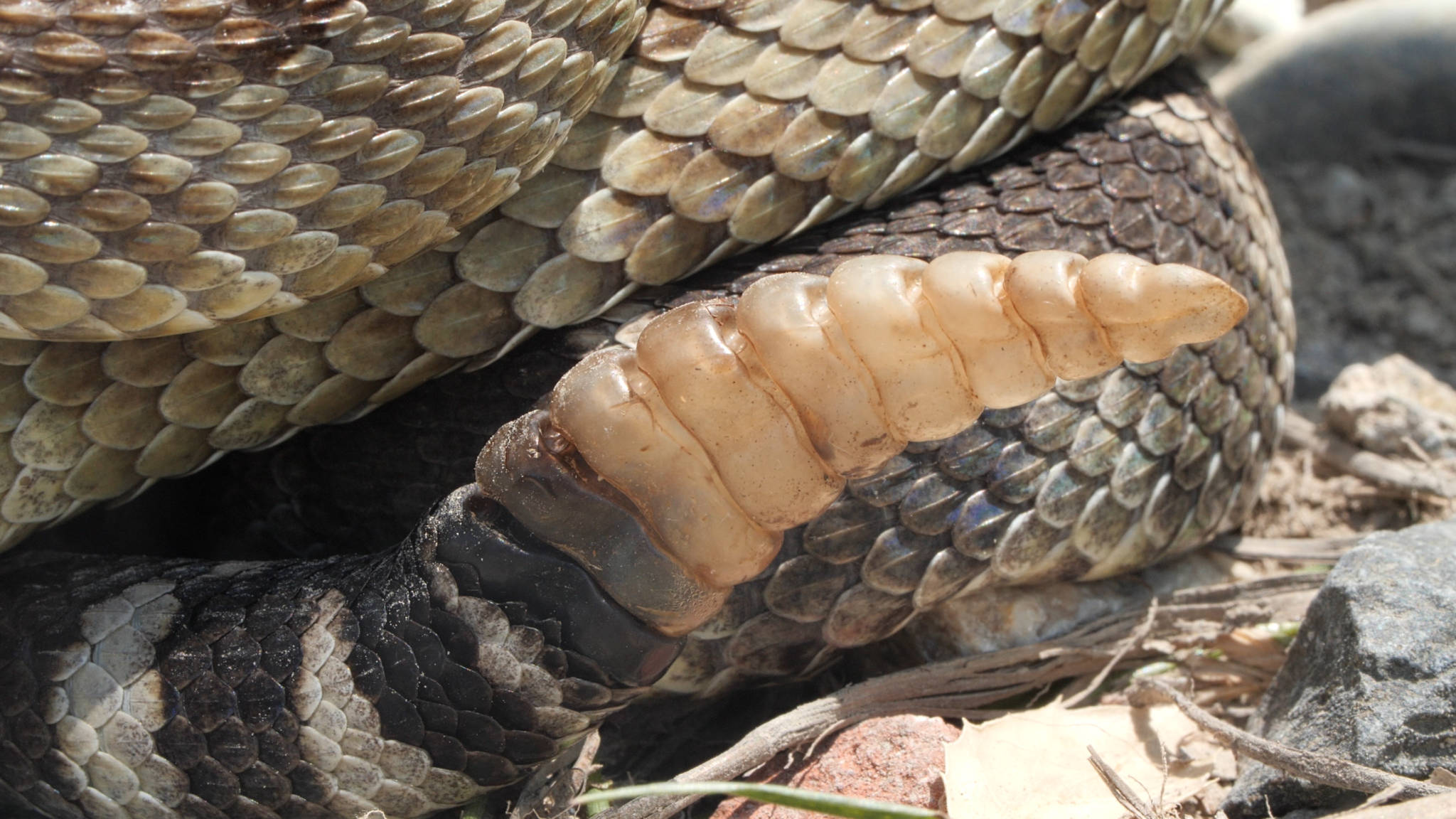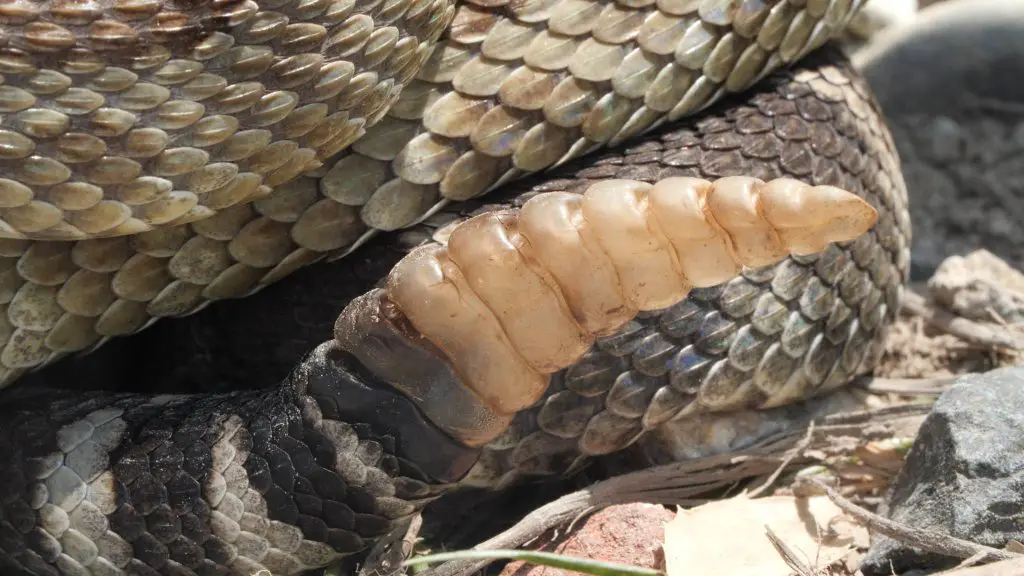Rattlesnakes are well-known for the distinctive noise they make with their tails. But have you ever wondered why they do it? This fascinating behavior has been a topic of curiosity for many years, and scientists have spent countless hours studying it to uncover the secrets behind this unique adaptation. In this article, we’ll explore the reasons why rattlesnakes rattle, the science behind it, and what it means for these fascinating creatures. So, get ready to delve into the world of rattlesnakes and discover the truth behind their mysterious rattles!
Rattlesnakes rattle to warn potential threats of their presence. The sound is produced by the vibration of specialized muscles in their tail, which produces a buzzing noise that can be heard up to several feet away. This serves as a warning to potential predators or threats to stay away.

Why Do Rattlesnakes Rattle?
Rattlesnakes are fascinating creatures that have been the subject of many myths and legends. One of the most distinctive features of these venomous snakes is their unique ability to rattle their tails. But have you ever wondered why rattlesnakes rattle? In this article, we will explore the various reasons why rattlesnakes use this behavior.
Warning Sign
Rattlesnakes use their rattle as a warning sign to potential predators and humans. When a rattlesnake feels threatened, it will rattle its tail as a way to warn the perceived threat to stay away. The rattling sound can be heard from a distance, giving the predator or human time to move away from the snake before it feels the need to strike.
In addition to the sound, rattlesnakes also use visual cues to warn predators. They will coil their bodies and lift their heads, making themselves look bigger and more threatening. This, combined with the sound of the rattle, is usually enough to deter predators from attacking.
Identification
Another reason why rattlesnakes rattle is to identify themselves to other snakes. Each rattlesnake has a unique rattle, much like a fingerprint, which can be used to identify individual snakes. When two rattlesnakes meet, they will often rattle their tails as a way of identifying themselves to each other.
In addition to identifying themselves, rattlesnakes can also use their rattle to locate other snakes. The sound of a rattlesnake’s rattle is unique, and other snakes can use it to locate potential mates or competitors.
Mating
Rattlesnakes also use their rattle as a way of attracting potential mates during breeding season. Male rattlesnakes will often rattle their tails as a way of attracting female snakes. The sound of the rattle is thought to be a signal of the male’s strength and fitness, making him a desirable mate.
In addition to attracting mates, rattlesnakes can also use their rattle to deter other males from approaching. A male rattlesnake will often rattle its tail as a way of warning other males to stay away from his territory and potential mates.
Benefits of Rattling
The ability to rattle their tails gives rattlesnakes a distinct advantage in the wild. By warning predators and humans of their presence, they can avoid potentially dangerous encounters. Additionally, the ability to identify and locate other snakes is essential for breeding and competition.
However, there are also some drawbacks to rattling. The sound of the rattle can also attract predators, making the rattlesnake more vulnerable to attacks. Additionally, some humans may mistake the sound of a rattlesnake’s rattle for a harmless insect or animal, putting themselves in danger.
Rattlesnake vs. Other Snakes
While rattlesnakes are not the only snakes that can make noise, they are the only ones that can rattle their tails. Other snakes, such as the king cobra, can make a hissing sound by forcing air through their nostrils, but this is not as loud or distinctive as a rattlesnake’s rattle.
The rattlesnake’s unique ability to rattle its tail makes it one of the most recognizable and iconic snakes in the world. Its distinctive sound and warning behavior have made it the subject of many myths and legends, and it remains a fascinating creature to this day.
In Conclusion
In conclusion, rattlesnakes rattle for a variety of reasons, including warning predators and humans, identifying themselves to other snakes, and attracting potential mates. While the ability to rattle their tails gives them a distinct advantage in the wild, it also comes with some drawbacks. Understanding why rattlesnakes rattle can help us better appreciate these fascinating creatures and avoid potentially dangerous encounters with them.
Frequently Asked Questions
Here are some common questions people have about rattlesnakes and why they rattle.
What is the purpose of a rattlesnake’s rattle?
A rattlesnake’s rattle is used as a warning signal to potential predators and other threats. When a rattlesnake feels threatened, it will vibrate its tail muscles rapidly, causing the rattle to produce a loud, distinctive sound. This serves as a warning to any nearby animals that the rattlesnake is dangerous and should be avoided.
Additionally, the rattle can help the rattlesnake to locate its prey. The sound of the rattle can attract small animals, such as rodents, which the rattlesnake can then hunt and eat.
Do all species of rattlesnakes have rattles?
No, not all species of rattlesnakes have rattles. There are some species, such as the Mojave rattlesnake, that have a very small or even non-existent rattle. However, most species of rattlesnakes do have rattles, and it is a distinctive characteristic of the species.
It is also worth noting that not all snakes that make a rattling sound are rattlesnakes. Some non-venomous snakes, such as the eastern hognose snake, can mimic the sound of a rattlesnake by hissing and shaking their tails, but they do not have a true rattle.
How does a rattlesnake’s rattle work?
A rattlesnake’s rattle is made up of a series of interlocking segments, called buttons, that are composed of keratin, the same material as human fingernails. When the rattlesnake vibrates its tail muscles, the buttons strike each other, producing the characteristic buzzing sound.
Over time, the rattlesnake will shed its old buttons and grow new ones, so the number of buttons on a rattlesnake’s rattle can be used as an estimate of the snake’s age.
Can a rattlesnake rattle without its tail?
No, a rattlesnake cannot rattle without its tail. The rattle is located at the end of the snake’s tail and is produced by the movement of the tail muscles. If a rattlesnake loses its tail, it will not be able to produce the distinctive rattling sound.
However, even without its rattle, a rattlesnake can still be dangerous, as it is still venomous and can deliver a painful and potentially deadly bite.
What should I do if I encounter a rattlesnake?
If you encounter a rattlesnake, it is important to stay calm and give the snake plenty of space. Do not try to approach or handle the snake, as this can provoke it and increase your risk of being bitten.
If possible, slowly and carefully back away from the snake and leave the area. If you are in a location where rattlesnakes are common, it is a good idea to wear thick, protective clothing and sturdy boots to reduce your risk of being bitten.
In conclusion, the rattlesnake’s rattle serves as a warning signal to potential predators and other animals nearby. It is an adaptation that has evolved over time to help the snake defend itself and avoid conflict. The rattle is made up of interlocking segments that produce a distinct sound when shaken. While some people may fear rattlesnakes, it is important to remember that they play an important role in the ecosystem and should be respected from a safe distance. Overall, the rattlesnake’s rattle is a fascinating and unique aspect of their biology that continues to intrigue and fascinate scientists and nature enthusiasts alike.


